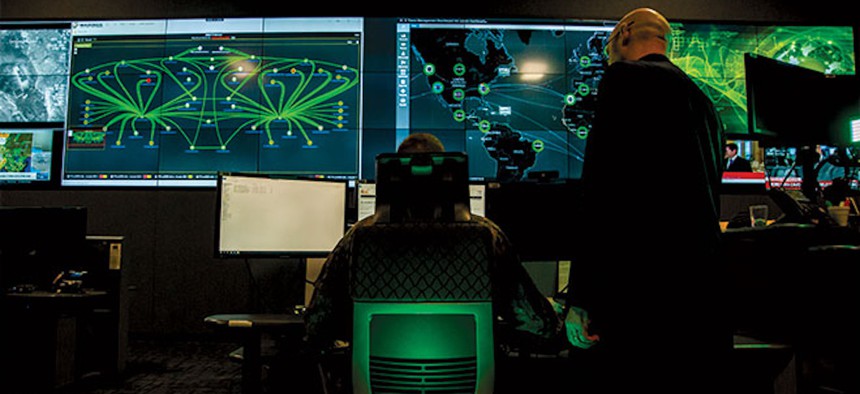Four Things the Pentagon Needs to Do to Advance Its AI
The view from NSCAI’s executive director.
“We can still defend America and our allies without widespread AI adoption today,” wrote the National Security Commission on Artificial Intelligence in its recent report, “but in the future, we will almost certainly lose without it.” To this end, there are four areas we need to move faster on.
First, the Pentagon needs to get its technical backbone in place. The DoD must have a modern digital infrastructure that supports ubiquitous development and delivery of AI capabilities department-wide, from headquarters to the front lines. This infrastructure should function as a common platform that provides networked, on-demand access to scalable storage and compute, enables the sharing of data, software, and capabilities through hardened application programming interfaces with proper access controls, and equips researchers and developers with the tools and data models they need to drive new AI capabilities. NSCAI calls for a federated approach to achieve this vision by knitting together ongoing efforts across the Department, such as the JAIC’s Joint Common Foundation and the Air Force's Platform One, into an extensible common digital fabric that supports development, production, and integration of AI solutions.
Second, the DoD must inculcate technical know-how at all levels. We will need new ways to recruit, train, and retain the technical experts who buy, build, and integrate new technologies. This includes entirely new pipelines for talent such as a U.S. Digital Service Academy and new ways to manage technical talent and digital career fields. DoD must overhaul the management and education of service members by identifying those who excel in computational thinking, upskilling the existing workforce, familiarizing our warfighters with AI concepts and other disruptive and emerging tech during initial training and professional military education courses, and creating new billets and certifications for emerging technology. We cannot expect warfighters to change the way they fight until we change the way they train and think.
Third, DoD should rapidly integrate AI into all major wargames and exercises and incentivize experimentation. This teaming of warfighters and technologists will help promote the field-to-learn approaches and bottom-up innovation that powers technology adoption. Operators need continuous and persistent interaction with technologists across the development life cycle to provide critical user feedback and to improve trust in AI-enabled systems. Together, this coupling of warfighters and technologists will help drive better integration of operational concepts with emerging technologies, design more innovative concepts, identify new forms of human-machine teaming, and improve the performance of AI-enabled technology.
Finally, the Pentagon needs sustained top-down leadership to accelerate change and drive outcomes. Change of this magnitude has to start from the top. Our commissioners’ experiences show that at least 50 percent of AI adoption is about organizational change and therefore requires steady, persistent leadership and a willingness to hold the organization accountable. Leaders in DoD, the intelligence community, and Congress must commit to this task and break down the institutional barriers and stovepipes that resist innovative change. For their part, DoD and the intelligence community need to form a senior-level Steering Committee on Emerging Technology to align their strategies, investments, and implementation of powerful technologies such as AI.
Our military and our nation face a strategic imperative. We must act to ensure the kind of technological advantage that enabled U.S. forces to save the lives of my loved ones in Kosovo and allows America to deter aggression and act as a global force for good. There is no Easy button; we must act now, roll up our sleeves, and do the heavy lifting required to meet this challenge. Leaders in DoD, the IC, and Congress will need to come together to develop solutions that provide the needed agility, accountability and oversight to accelerate AI adoption and an AI-ready force.
Ylli Bajraktari is the Executive Director of the National Security Commission on Artificial Intelligence.




